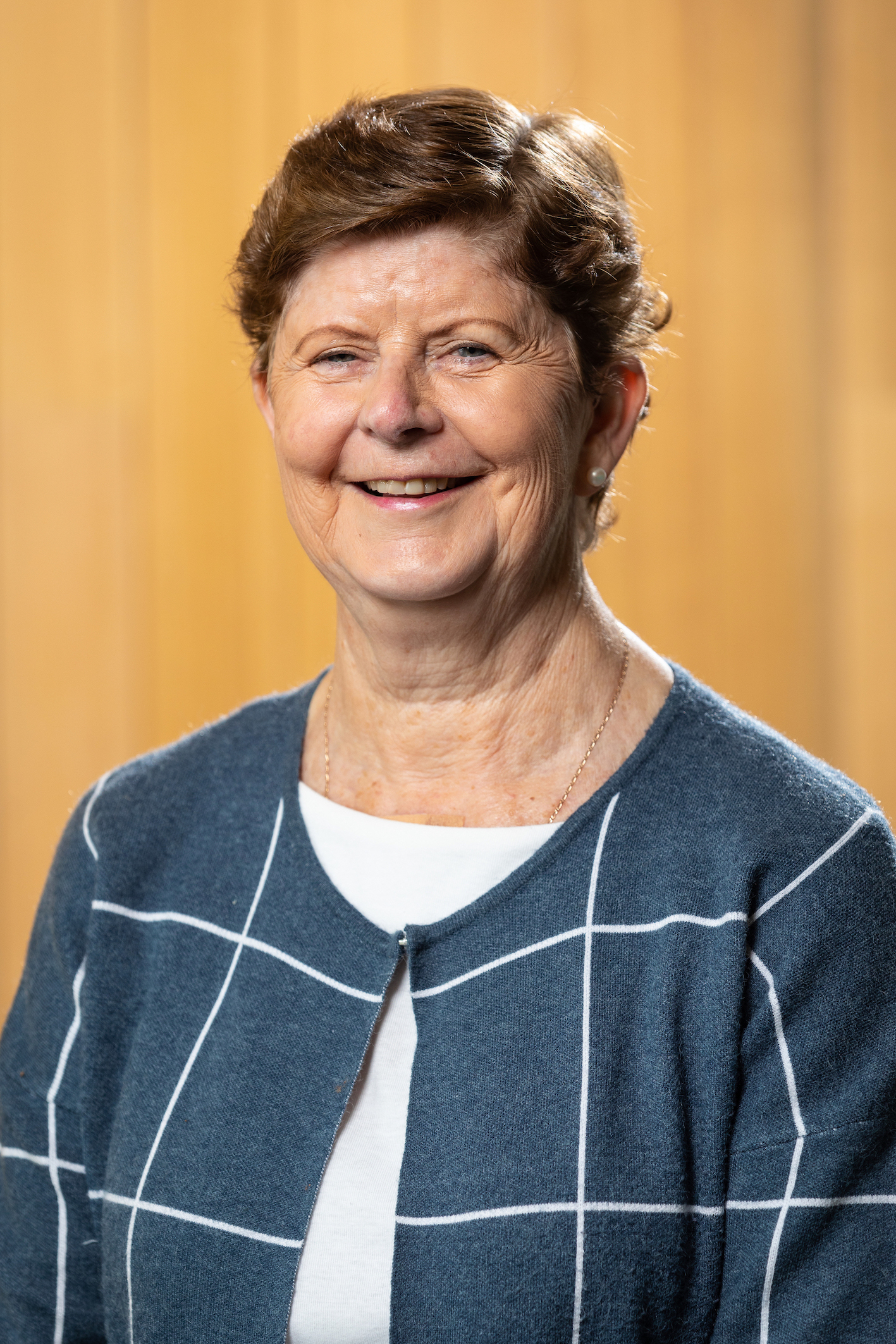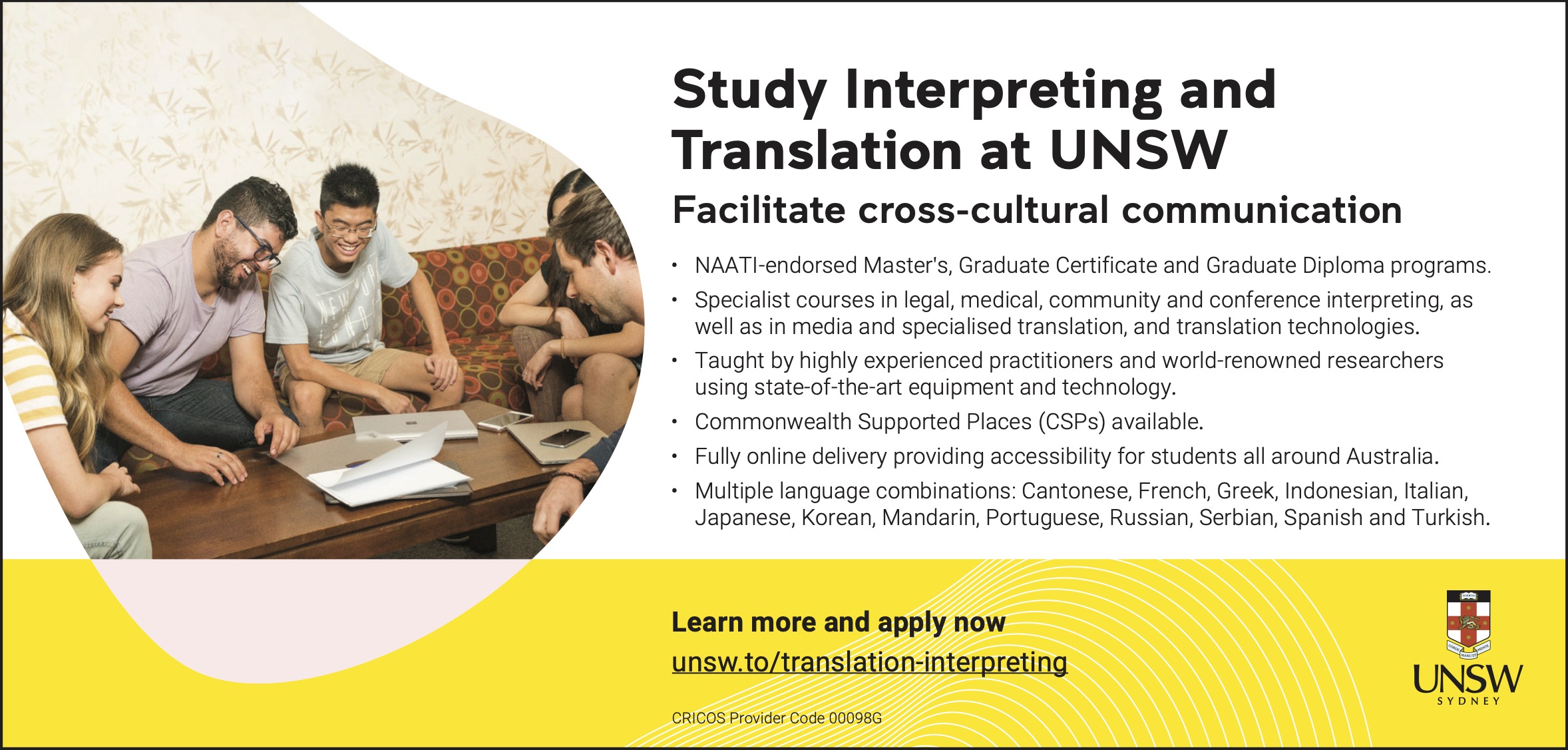AUSLAN INTERPRETING
This time last year we published an article by Auslan interpreter Meredith Bartlett on a major breakthrough in inclusion that resulted from the Victorian Law Reform Commission’s Inclusive Juries review, for which both she and our Acting President Erika Gonzalez were interviewed.* Meredith’s biography mentioned research that she is conducting into ‘tactile Auslan’. Intrigued, we asked her to tell us more.
* You can read Meredith’s 2023 article here.

People who use tactile Auslan are described by NDIS provider Able Australia as ‘plac[ing] their hands over the hand of their communication partner to feel the signs.’
They go on to explain that ‘as facial expression is an important part of Auslan, communication partners need to give extra information to help convey the meaning of what is being signed.’
As with any definition involving language use in the community, the details are way more complicated. Firstly, the fact that a person has both a sight and a hearing impairment doesn’t immediately lead to them using either sign language or the adapted technologies which many blind people are familiar with. Plus many people who are born with severe disabilities including sight and hearing loss may never learn to communicate – using sign language or any other means of communication – to a level which facilitates use of a tactile sign language.
So let me begin by saying that I am an Auslan interpreter and have spent over four decades working in the Australian Deaf community, interpreting for members of that community who use signed language – or visual Auslan – as their major way of communicating. Members of this community who lose their sight find themselves needing other ways to access their interpreter or other interlocutors, because visual Auslan is now not accessible to them.
You will notice that I have … foregrounded their deafness over their blindness, and this is deliberate …
The causes of sight loss are many and varied, but some of those more known in the Deaf community are Usher syndrome, retinitis pigmentosa (RP), glaucoma (associated with maternal rubella), CHARGE syndrome and cytomegalovirus (CMV). These may involve gradual loss of peripheral vision until the Deaf person can only see in a small narrow tunnel, and/or spotted, blurred, foggy or blocked vision.
Depending on the cause of their loss of sight, Deaf people may stand further away from the signer in order to enlarge the picture they can see, or they may start to hold the signer’s hands in order to keep the movement within their ‘sight frame’ and to slow down the signing for easier access. As the sight loss impacts more and more, the Deaf person may start to hold the wrist of their interlocutor all the time, in order to be able to follow more closely what is being signed. Gradually the hands of this Deaf person who is going blind may begin to slide upwards until they are resting completely on the fingers of the signer. In doing so, they have moved through the stages of ‘visual frame’ language access, to ‘tracking’ the other hands, to ‘tactile sign reception’. Their own sign production continues the way they have always signed, and they use an Auslan interpreter who is experienced in each of the stages the Deaf person goes through on their journey with sight loss.
You will notice that I have referred to a Deaf person throughout this article, i.e. I’ve foregrounded their deafness over their blindness, and this is deliberate. People who are born blind or partially sighted, with a hearing loss in their younger years which may become more and more serious, very rarely join the Deaf community and learn Auslan.

They more frequently depend on technology and devices to access communication, and continue to develop friendships in their local or work communities. However, members of Deaf communities who experience sight loss struggle to stay in touch with their signing friends, and find themselves grieving simultaneously for the loss of their language (Auslan), their social networks, and their ‘Deaf identity’. While some of these Deaf people isolate themselves out of fear and difficulty in moving safely around their city, most try to come together for social contact in the way they have always done. In order to do so, their sign language must now adapt from a visual to a tactile language.
In addition, their interpreters must learn to convey a lot of information in a different way, and it cannot happen just on the hands. Social haptic communication, i.e., the conveying of additional environmental information, begins to be important for the deafblind person. This takes the form of signals on the body, arm, leg, or back of the hand. These include audience reactions, back channelling, laughter, smiling, emotional responses and facial expressions conveyed to the Deafblind person by the interpreter, at the same time as signing. Sometimes a second interpreter or a communication guide may do this haptic work. In parts of the USA this has developed into a whole new form of the language, called Pro-tactile, while in Europe and Australia we continue to refer to it as Auslan with haptics, or tactile Auslan.
Dr Meredith Bartlett is a practising Auslan interpreter and interpreter educator, and is currently conducting research into tactile Auslan with a team at Monash University, supported by an ARC Linkage Grant, with partners Able Australia and NAATI. Meredith has also taught Auslan/English interpreters at RMIT for more than 25 years, and has published in the field of linguistics of tactile Auslan as used by deafblind signers in Australia.
Advertisement:



